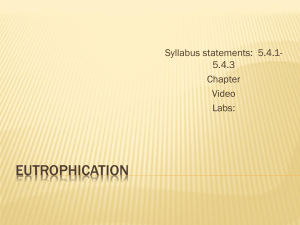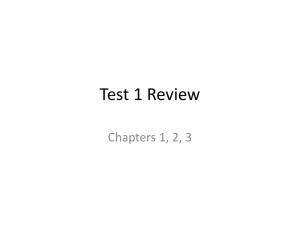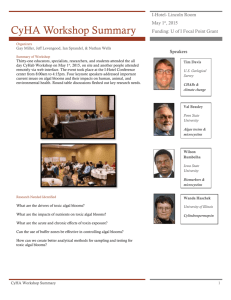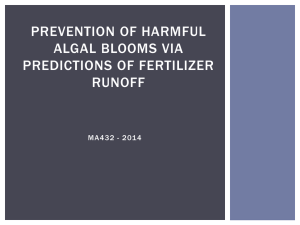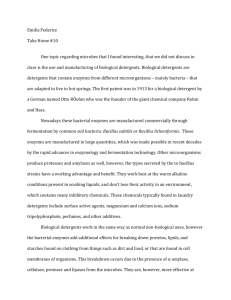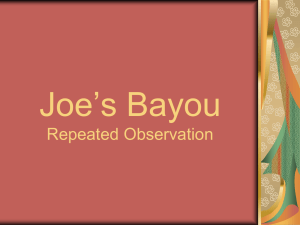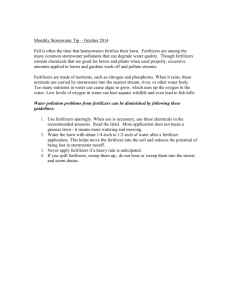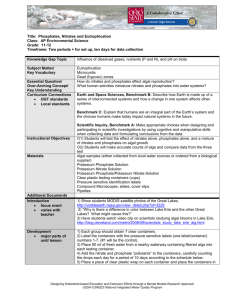Phosphates, Nitrates and Algal Blooms
advertisement
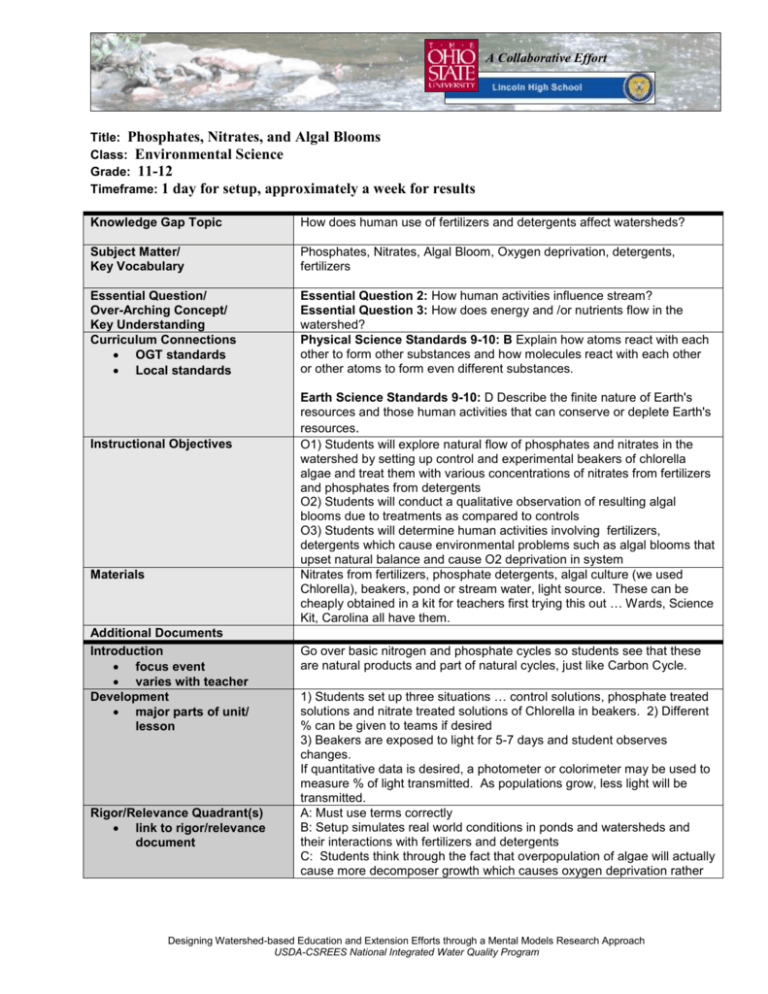
A Collaborative Effort Title: Phosphates, Nitrates, and Algal Blooms Class: Environmental Science Grade: 11-12 Timeframe: 1 day for setup, approximately a week for results Knowledge Gap Topic How does human use of fertilizers and detergents affect watersheds? Subject Matter/ Key Vocabulary Phosphates, Nitrates, Algal Bloom, Oxygen deprivation, detergents, fertilizers Essential Question/ Over-Arching Concept/ Key Understanding Curriculum Connections OGT standards Local standards Essential Question 2: How human activities influence stream? Essential Question 3: How does energy and /or nutrients flow in the watershed? Physical Science Standards 9-10: B Explain how atoms react with each other to form other substances and how molecules react with each other or other atoms to form even different substances. Instructional Objectives Materials Additional Documents Introduction focus event varies with teacher Development major parts of unit/ lesson Rigor/Relevance Quadrant(s) link to rigor/relevance document Earth Science Standards 9-10: D Describe the finite nature of Earth's resources and those human activities that can conserve or deplete Earth's resources. O1) Students will explore natural flow of phosphates and nitrates in the watershed by setting up control and experimental beakers of chlorella algae and treat them with various concentrations of nitrates from fertilizers and phosphates from detergents O2) Students will conduct a qualitative observation of resulting algal blooms due to treatments as compared to controls O3) Students will determine human activities involving fertilizers, detergents which cause environmental problems such as algal blooms that upset natural balance and cause O2 deprivation in system Nitrates from fertilizers, phosphate detergents, algal culture (we used Chlorella), beakers, pond or stream water, light source. These can be cheaply obtained in a kit for teachers first trying this out … Wards, Science Kit, Carolina all have them. Go over basic nitrogen and phosphate cycles so students see that these are natural products and part of natural cycles, just like Carbon Cycle. 1) Students set up three situations … control solutions, phosphate treated solutions and nitrate treated solutions of Chlorella in beakers. 2) Different % can be given to teams if desired 3) Beakers are exposed to light for 5-7 days and student observes changes. If quantitative data is desired, a photometer or colorimeter may be used to measure % of light transmitted. As populations grow, less light will be transmitted. A: Must use terms correctly B: Setup simulates real world conditions in ponds and watersheds and their interactions with fertilizers and detergents C: Students think through the fact that overpopulation of algae will actually cause more decomposer growth which causes oxygen deprivation rather Designing Watershed-based Education and Extension Efforts through a Mental Models Research Approach USDA-CSREES National Integrated Water Quality Program Product/Artifacts/Student Evidence of Understanding Accommodations plan B differentiated instruction Formative Assessment/Feedback measure of progress Final Evaluation project rubric oral or paper quiz/test portfolio Teacher Reflection complete after lesson than more oxygen. D: Brainstorm ways to restrict fertilizer run off or change our way of cleaning with detergents If students use quantitative measurements, they can produce graphs of algal growth over time with colorimeter or photometer data Doing the quantitative part of measuring light transmittance is not necessary for basic idea … student can readily see differences without graphing data. Use questions during lecture to assess understanding of basic phosphate and nitrate cycles Ask probing questions about student predictions while they are setting up solutions and correct any misconceptions at that time Qualitative: Students take digital photographs of results as evidence supporting that excess phosphates and nitrates cause algal blooms Quantitative: Student collect % transmittance data over several days and graph results to show evidence that supports excess phosphates and nitrates cause algal blooms This is a very simple, yet effective lab for showing problems that occur when using fertilizers or detergents. Designers/Email: Fred Donelson (fdonelson@gjps.org) Additional Comments: I will probably use colorimeters next time to add a quantitative piece to this lab, but students certainly found this easy to understand. Designing Watershed-based Education and Extension Efforts through a Mental Models Research Approach USDA-CSREES National Integrated Water Quality Program
